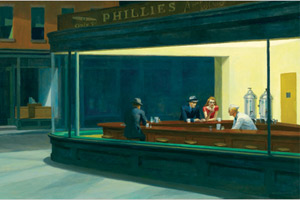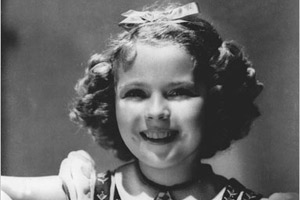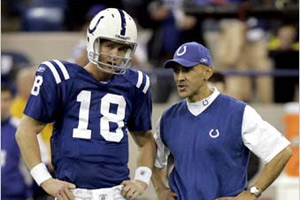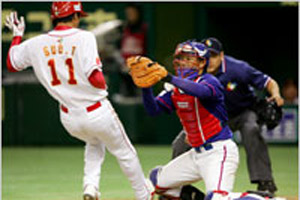Focus on America
Enigmatic Images from Edward Hopper Seen in New Exhibition

Nighthawks, the mysterious 1942 painting of four people in a diner that has become one of the best-known images of 20th-century America, is among the many striking works in a retrospective of artist Edward Hopper's work at Washington’s National Gallery of Art.
This is the first comprehensive survey of Hopper’s career to be seen in American museums outside New York in more than 25 years, according to the National Gallery of Art.
Throughout his career, Hopper (1882-1967) produced haunting vignettes of urban life that suggest loneliness and isolation, as well as spare but powerful images of rural New England farmhouses, barns and fishing boats. These works have made him “one of the best known, most admired, and best loved of American artists,” Franklin Kelly, one of the curators of the new exhibition, Edward Hopper, told USINFO.
The exhibition (running from September 16, 2007, to January 21, 2008) traces Hopper’s evolution as an artist, from his early etchings -- whose crisp black-and-white outlines look surprisingly modern -- to his experiments in watercolor and his iconic oil paintings on large canvases.
The etchings, dating from 1915 to 1923, introduce themes Hopper would explore for the rest of his life: solitude in the city, evoked by the anonymous figures who populate an unspecified metropolis; elaborate Victorian mansions with a faint air of Gothic menace; New England’s boxy clapboard farmhouses and austere lighthouses; sailboats heeling against the wind; locomotives barreling along elevated rail tracks; and rustic country scenes.
In the 1920s, Hopper ventured beyond the city to paint a series of watercolors in Massachusetts and Maine. “In these works we see evidence of a certain contrariness and unconventionality in Hopper” because he rejected predictable seascape imagery and chose to portray “the crowded, messy decks of commercial fishing boats,” said Kelly.
Hopper’s interest in painting “the Victorian-era houses of sea captains” was another manifestation of his idiosyncratic nature, since “Victorian architecture was all but universally considered ugly” at the time, according to Kelly. “Yet he found beauty in these seemingly unpromising subjects,” and in the process he revealed a subtle lyricism in ordinary surroundings.
Hopper’s oil paintings include many of the most recognizable artworks of the 20th century. Highly original in composition, with stark contrasts of light and shadow, they capture the tensions of a society transitioning from a pastoral to an increasingly urban sensibility. As such, his most famous oils are widely interpreted as visual distillations of modern American life, circa 1927-1945.
Automat (1927) depicts a young woman seated alone in a self-service restaurant, the “automat” of the painting’s title. Brand-new, mechanized, and efficient, it symbolizes the fast pace of a large city, and hints at the difficulty in establishing human connections in an impersonal setting. The woman is attractive and stylishly attired, but the seat opposite her is conspicuously empty.
New York Movie (1939) shows an usherette at a movie theater, standing pensively in a hallway, not far from the theater seats where patrons are watching a film. Illuminated by a sconce, she is absorbed in her own thoughts. Her contemplative stance hints at an inner drama more compelling than the events unfolding onscreen.
Nighthawks (1942), the most famous of Hopper’s paintings and perhaps the most parodied artwork on the planet, has a film-noir ambience that evokes the hard-boiled detective fiction of the 1930s. In this enigmatic scene, a dark street corner serves as backdrop for the harshly lit interior of a diner, where three patrons -- two men and a woman -- are seated on barstools, leaning on the counter. One man sits by himself, his back to the viewer; the other man sits beside the woman, but it is not clear if there is any interaction between them. The diner is staffed by a solitary waiter, isolated in the center of the room, but none of the customers looks at him. All appear to be lost in their own private worlds.
Although these works invite speculation about their meanings, both explicit and implicit, they remain a riddle, said Kelly. Such paintings “at first may seem to offer the possibility of a narrative … but they remain poised on the edge of that possibility, revealing nothing,” he said. The essential mystery of Hopper’s images probably explains much of their appeal, and his works have inspired countless filmmakers -- including Alfred Hitchcock, whose film Psycho features a spooky Gothic house reminiscent of Hopper’s House by the Railroad (1925).
His singular artistic vision has confirmed Hopper’s stature as an American original, and his refusal to follow trends has reinforced that stature. At a time when cubism and abstract expressionism were gaining momentum in the art world, Hopper remained an uncompromising realist.
The exhibition seeks to give audiences “an increased and enhanced appreciation of Hopper and his art,” Kelly explained. “He has become so well-known through reproductions, parodies, et cetera, that it may not be obvious that he was a masterful composer of paintings and a striking colorist, among other things.”
Hopper’s paintings “are compelling not because they tell the stories of other lives with the ironic detachment that has so often been employed by chroniclers of modern life,” said Kelly, “but because they resonate with a shared and mutually understood experience.”
Recently on Focus on America
History of Actors in U.S. Politics Goes Back Decades
 They have not all achieved the spectacular success attained by the late President Ronald Reagan or current California Governor Arnold Schwarzenegger, but many American actors have followed the path from stage and screen to political office for decades.
They have not all achieved the spectacular success attained by the late President Ronald Reagan or current California Governor Arnold Schwarzenegger, but many American actors have followed the path from stage and screen to political office for decades.
Super Bowl Breaks Ground with First Black Coaches
 Even though the winner of Super Bowl 41 will not be decided until February 4 in Miami, one result is already in: the victorious head coach of American professional football’s championship game will be African American.
Even though the winner of Super Bowl 41 will not be decided until February 4 in Miami, one result is already in: the victorious head coach of American professional football’s championship game will be African American.
First Chinese Baseball Players Signed To Play in United States
 A new era in baseball may be beginning with the signing by the New York Yankees and Seattle Mariners of four Chinese players to major league contracts.
A new era in baseball may be beginning with the signing by the New York Yankees and Seattle Mariners of four Chinese players to major league contracts.